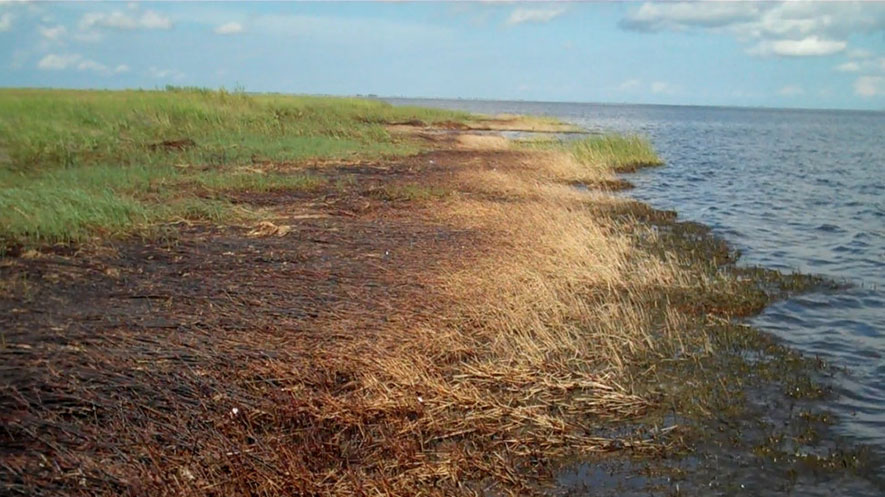According to a recently published study of 46 Louisiana islands before and after the 2010 Deepwater Horizon oil spill, erosion rates not only increased by 275% during the first six months after oiling, they continue to erode 200% more for the first two and a half years after the spill.
The reason? Researchers concluded that the “oiling compromised the belowground biomass of the emergent vegetation.”
Louisiana State University scientists quantified Louisiana island erosion pre- and post-Deepwater Horizon to determine the shoreline retreat rate when oiled, the length of time that oiling effects lasted, and whether or not there was recovery. They observed that the average oiled and unoiled island width, length, and erosion rate before the spill were similar, and that the oiled islands’ erosion rate increased about 275% in the first 6 months after the spill. The oiled islands’ average enhanced erosion rate declined over 2.5 years but was about twice that of the unoiled sites after 2.5 years. There was no evidence of reversal in the aggregate. These findings suggest that oil damaged the emergent vegetation’s belowground biomass, and that islands are a sentinel of future losses because they are more sensitive to shoreline stressors than nearby wetlands embedded in a contiguous wetland landscape. They published their findings in Marine Pollution Bulletin: Islands in the oil: Quantifying salt marsh shoreline erosion after the Deepwater Horizon oiling.
Deepwater Horizon oil reached approximately 1055 km of Louisiana’s shoreline, equaling about 65% of the total oiled shorelines in the Gulf of Mexico and 95% of the oiled wetland area. Some islands in Louisiana estuaries were oiled while others were not, offering a natural platform to examine differences in response to oiling. This study’s team used publicly-available aerial photographs taken between 1989 and 2012 to measure the length and width of 46 islands using a distinctive geomorphic feature on each island as a reference point. The team quantified the multi-year compromises to vegetation and scaled these impacts within the context of the background marsh erosion and management permits.
Study author R. Eugene Turner summed up their findings, “Our study suggests that the erosion of islands without oiling have a much faster erosion rate than wetlands embedded in a contiguous landscape, that the increased erosion lasted for several years, and that no ‘natural recovery’ is apparent. The impact on endangered birds is clear – one rookery was abandoned and others have a shorter life span.”
Quantifying the salt marsh system’s immediate responses to oiling over a broad geographical area may help inform our understanding of how multiple stressors influence these systems. The authors anticipate that quantifying oiling effects on vegetative stress and shoreline erosion will be of interest to wetland conservation because of the estimates of coastal island lifetime with and without the oil effects.
The data used in this paper are in the Supporting Online Materials and publicly available through the Gulf of Mexico Research Initiative Information & Data Cooperative (GRIIDC) at (DOI). The study’s authors are R. Eugene Turner, Giovanna McClenachan, and Andrew W. Tweel.



